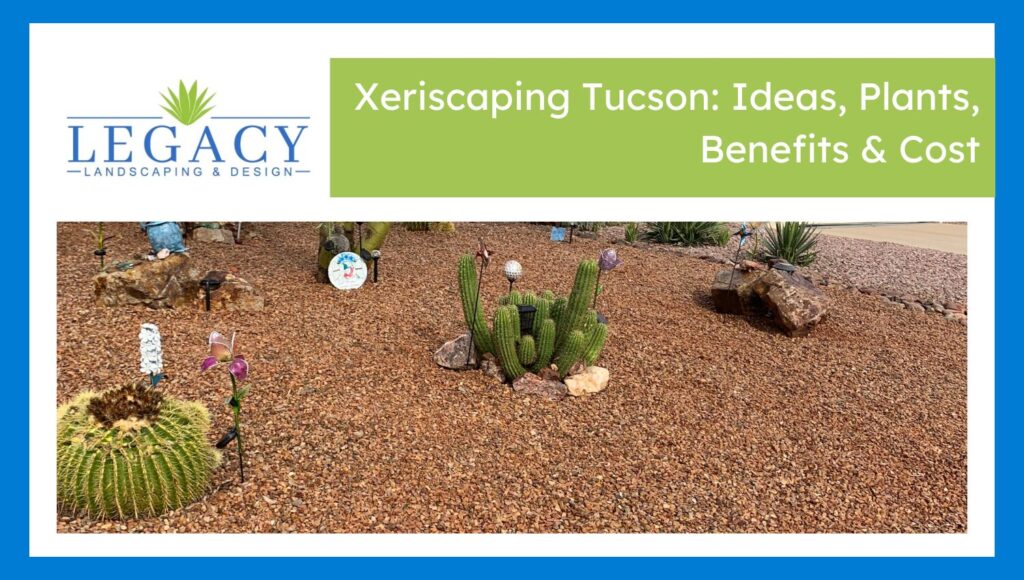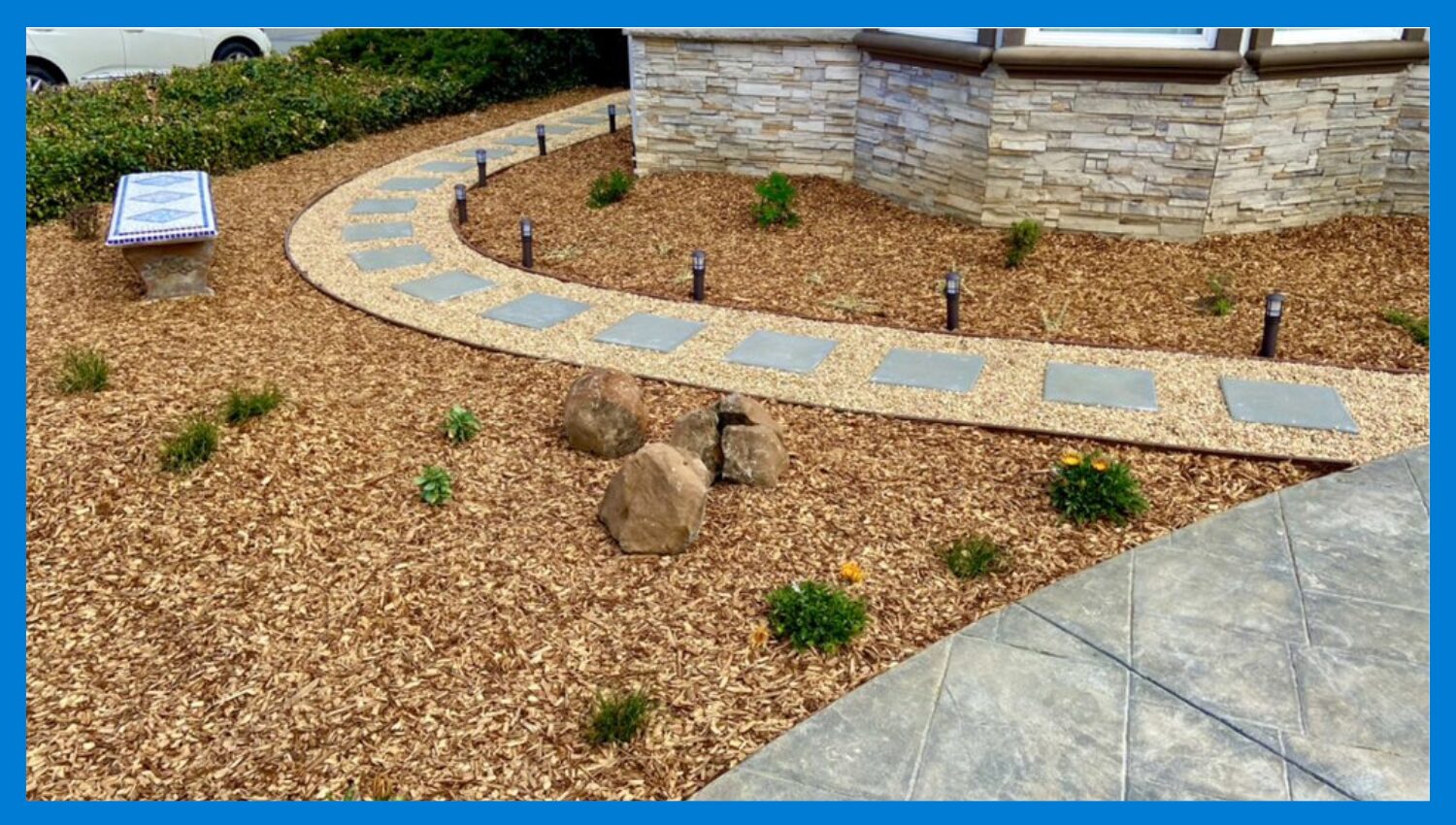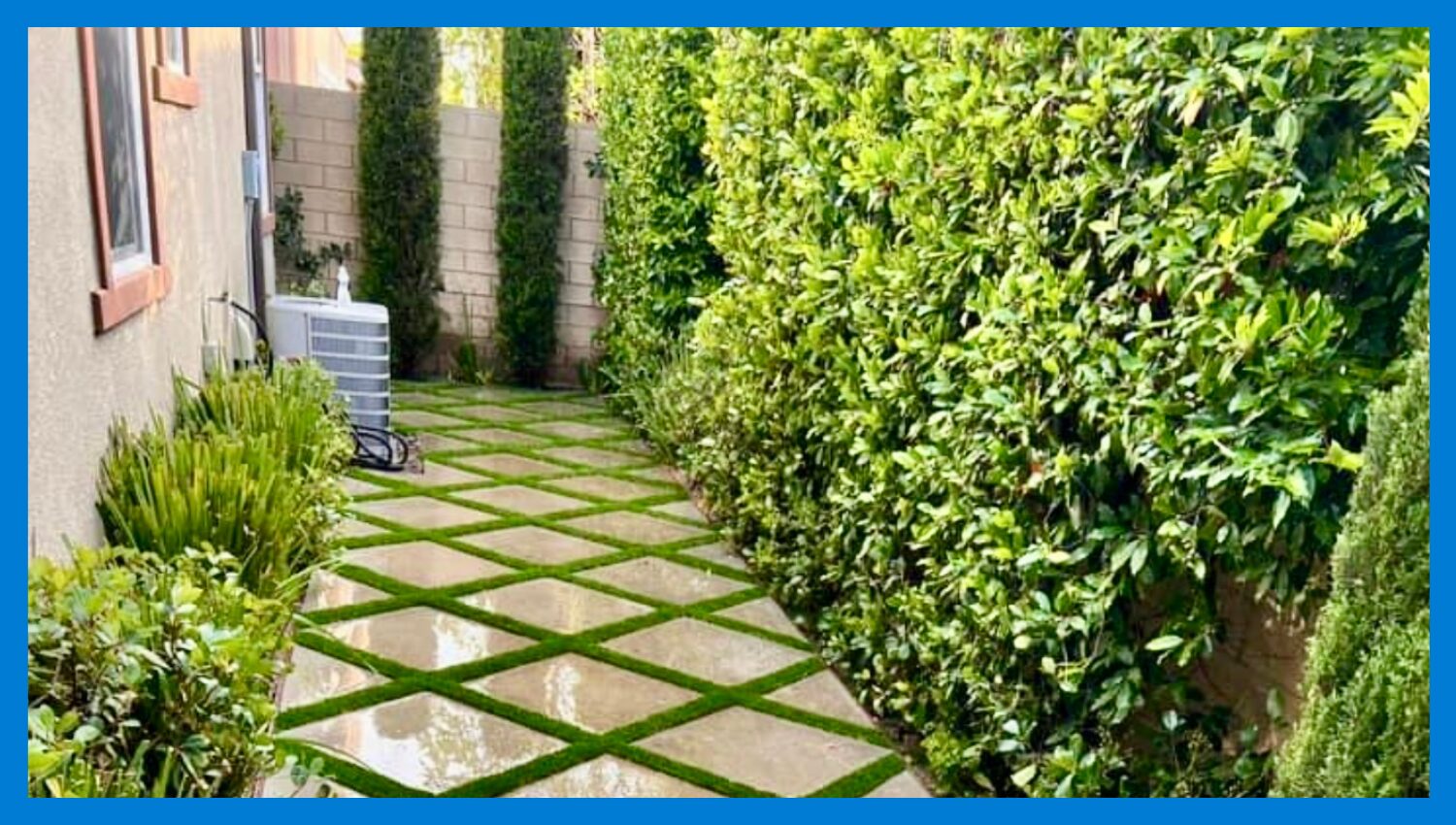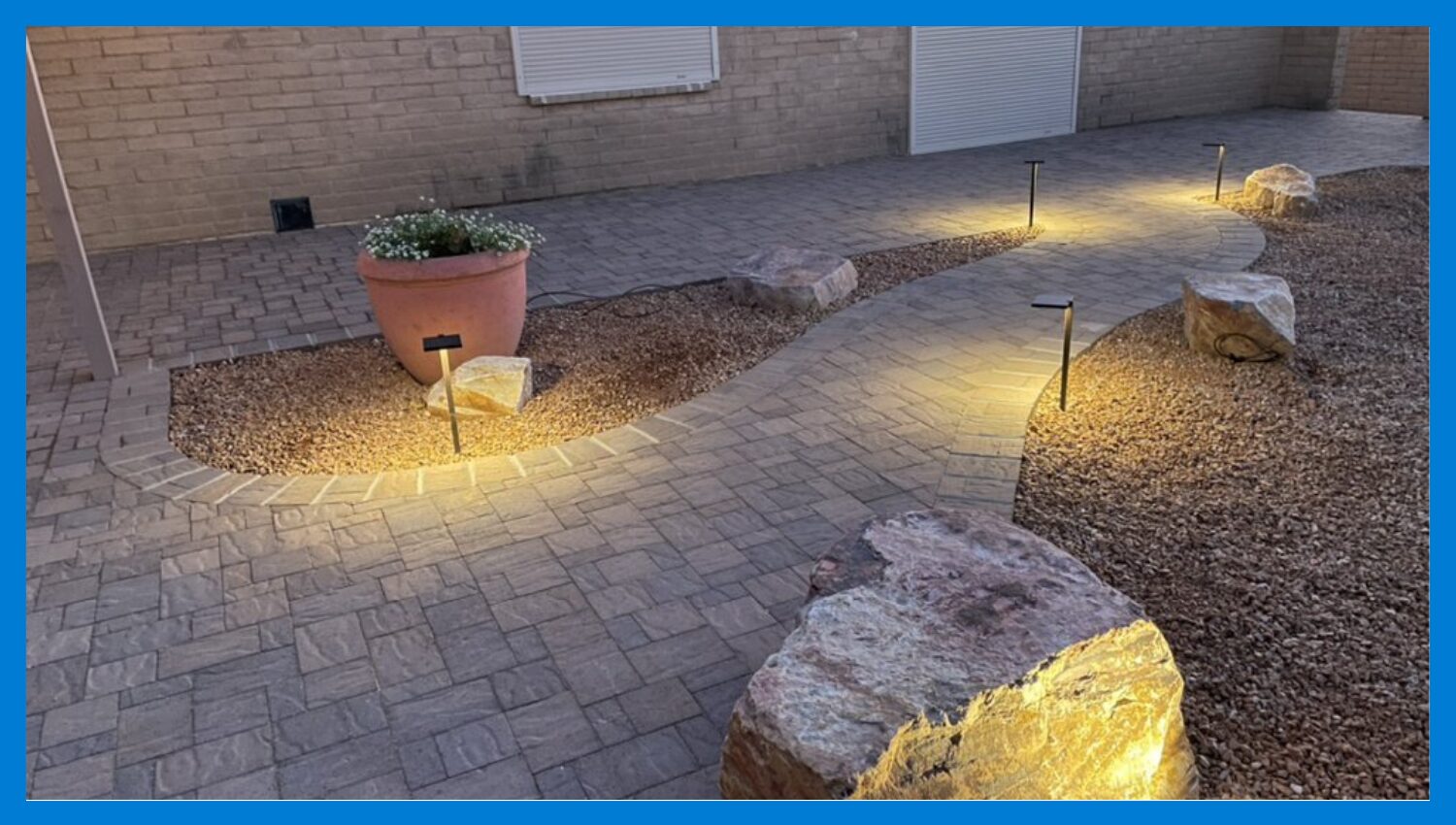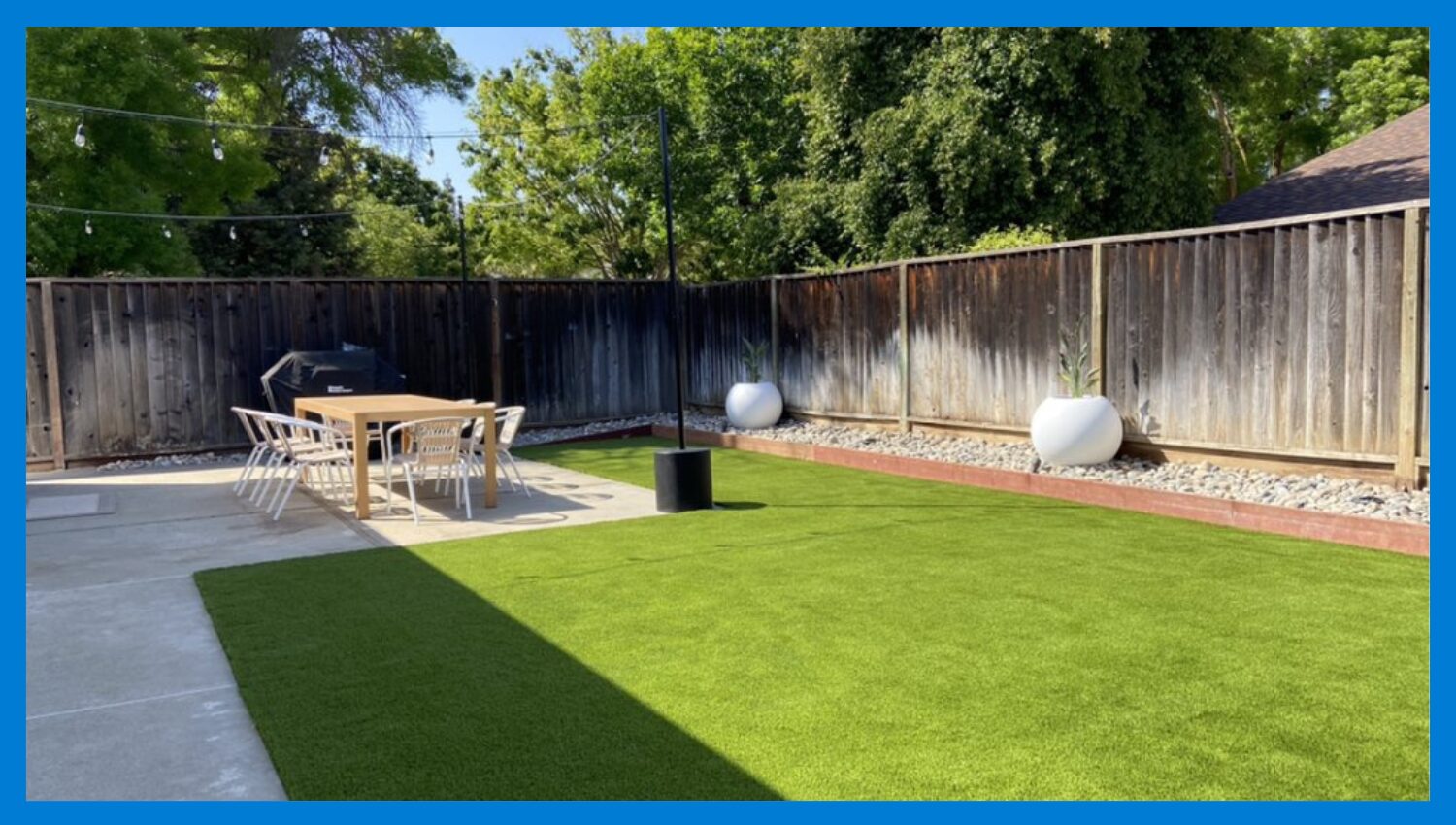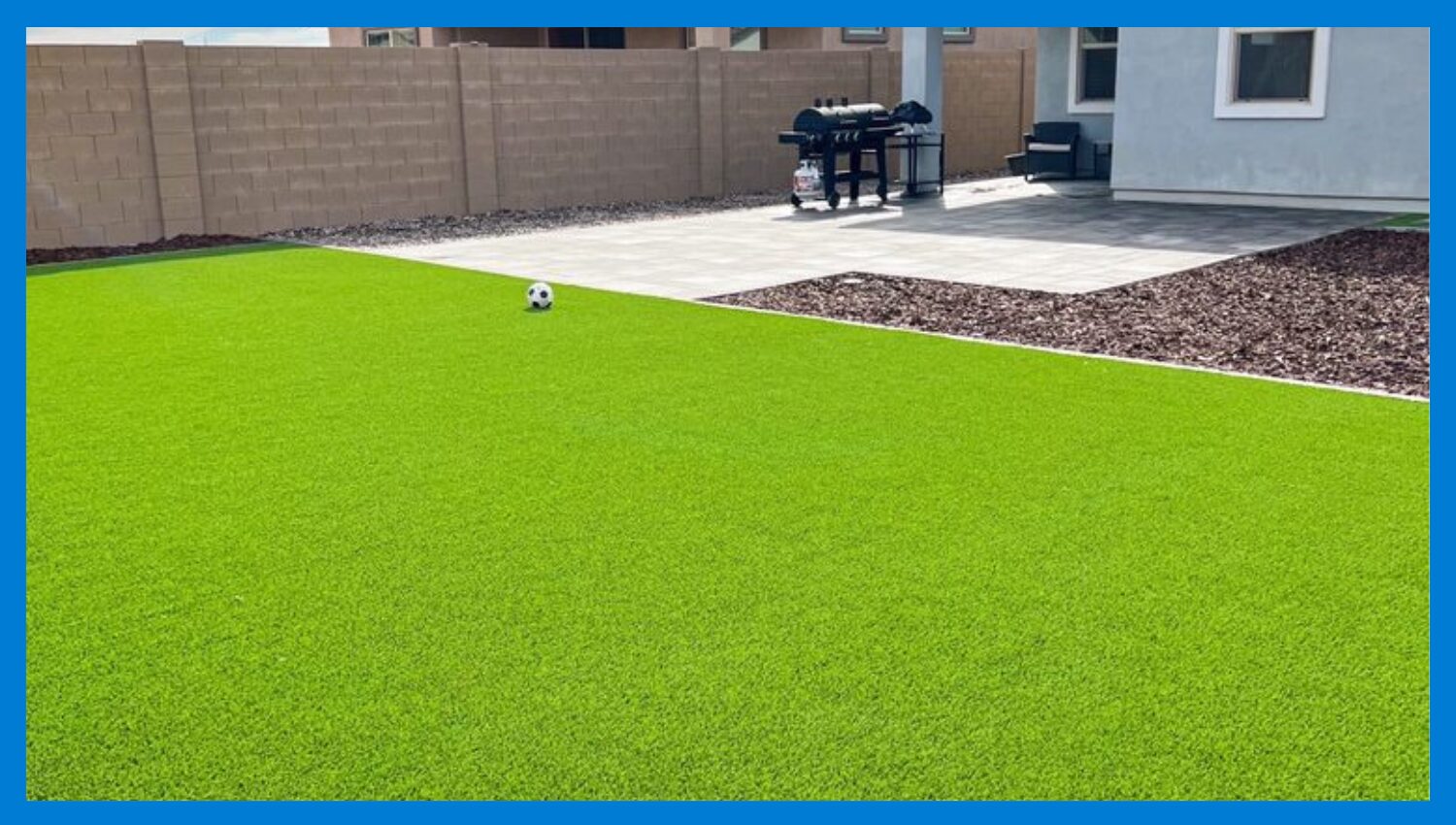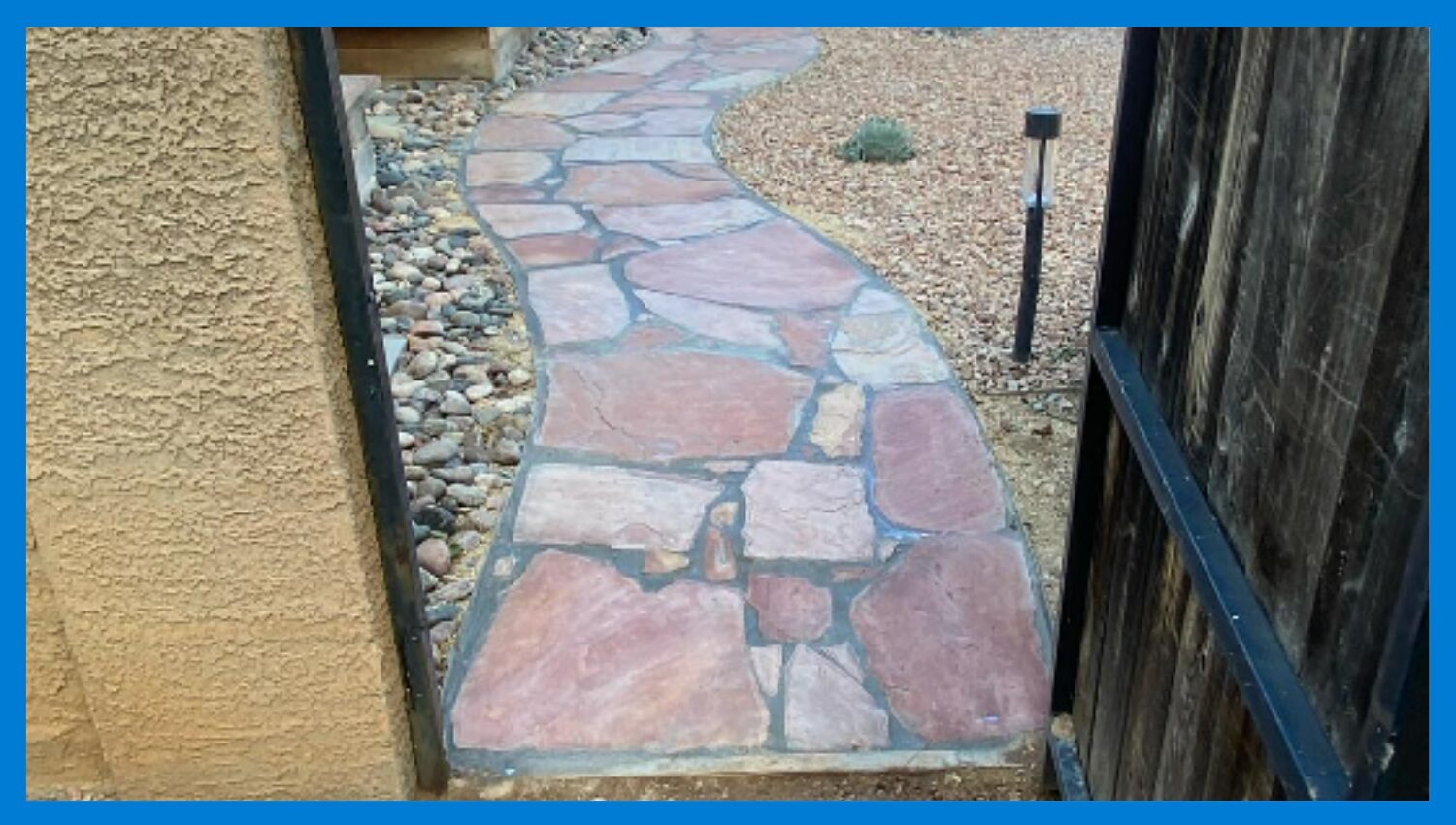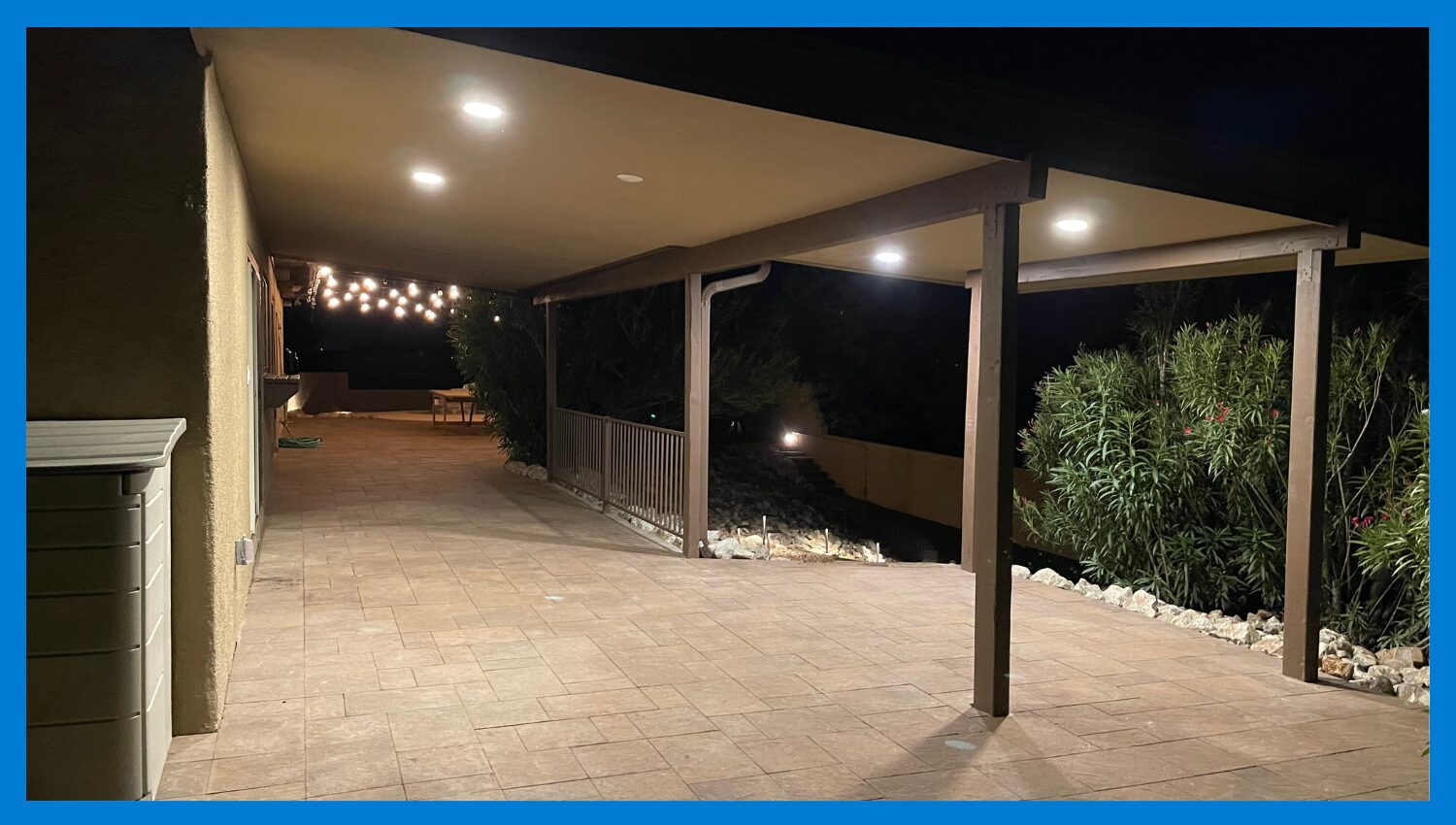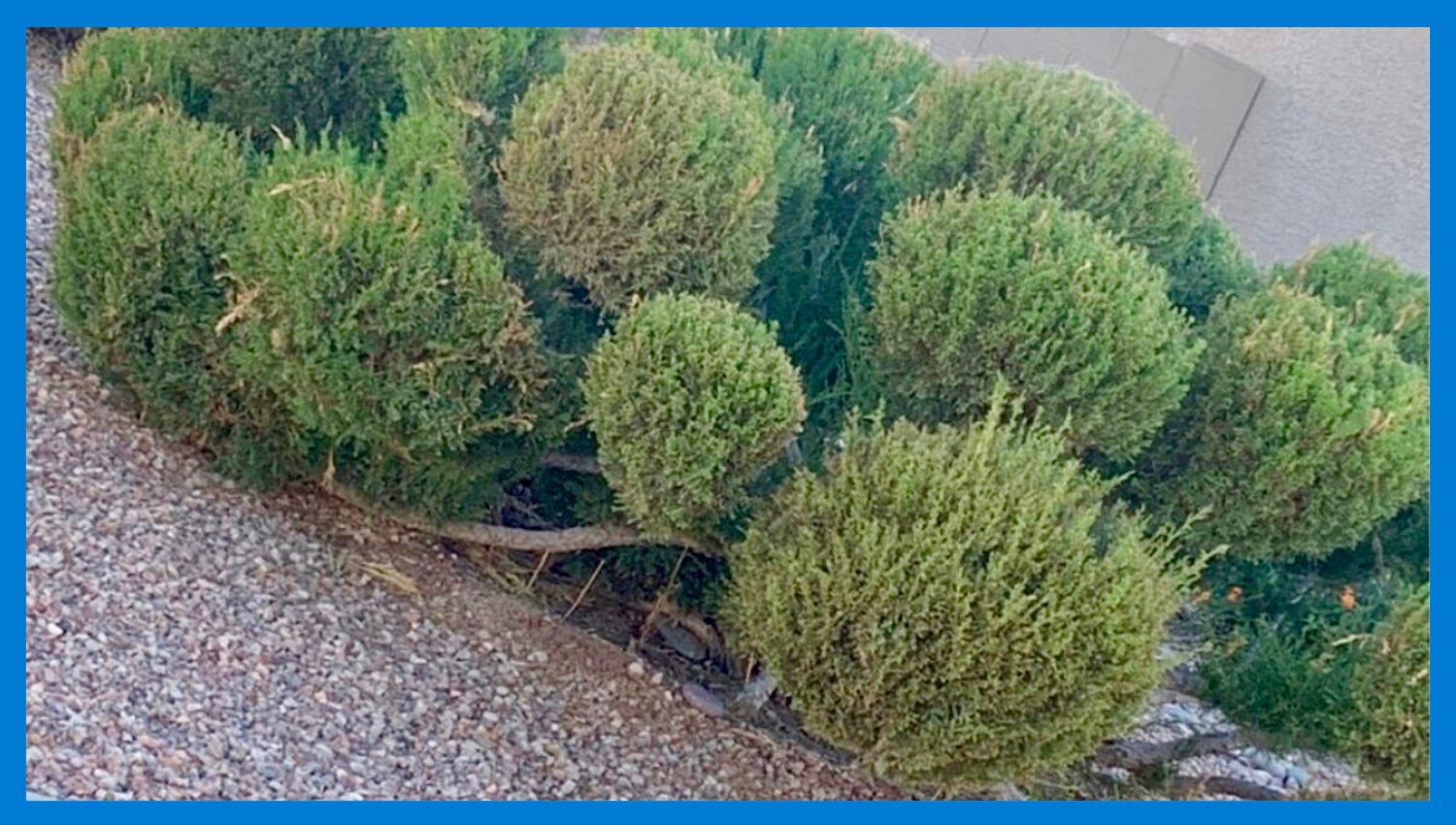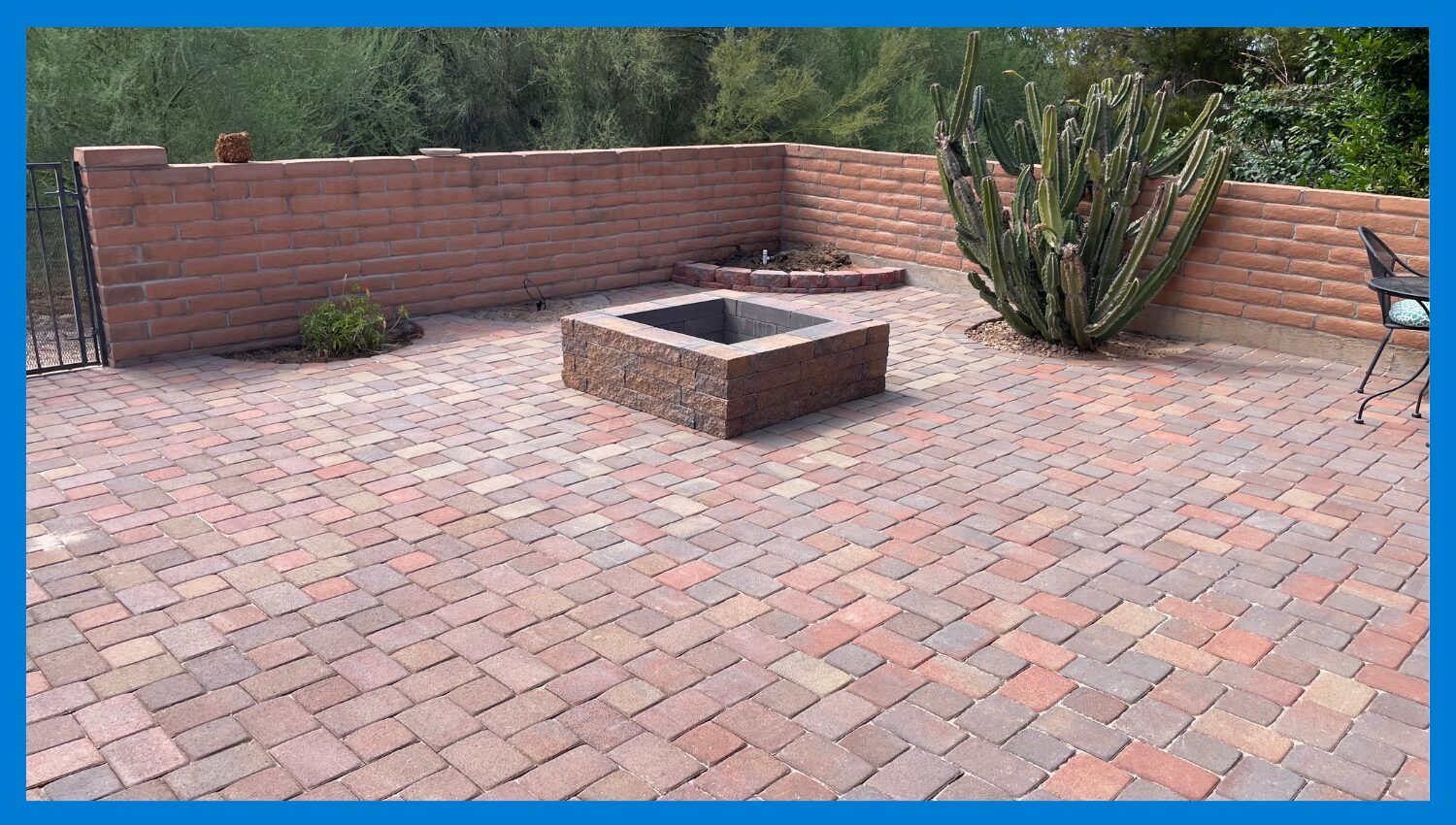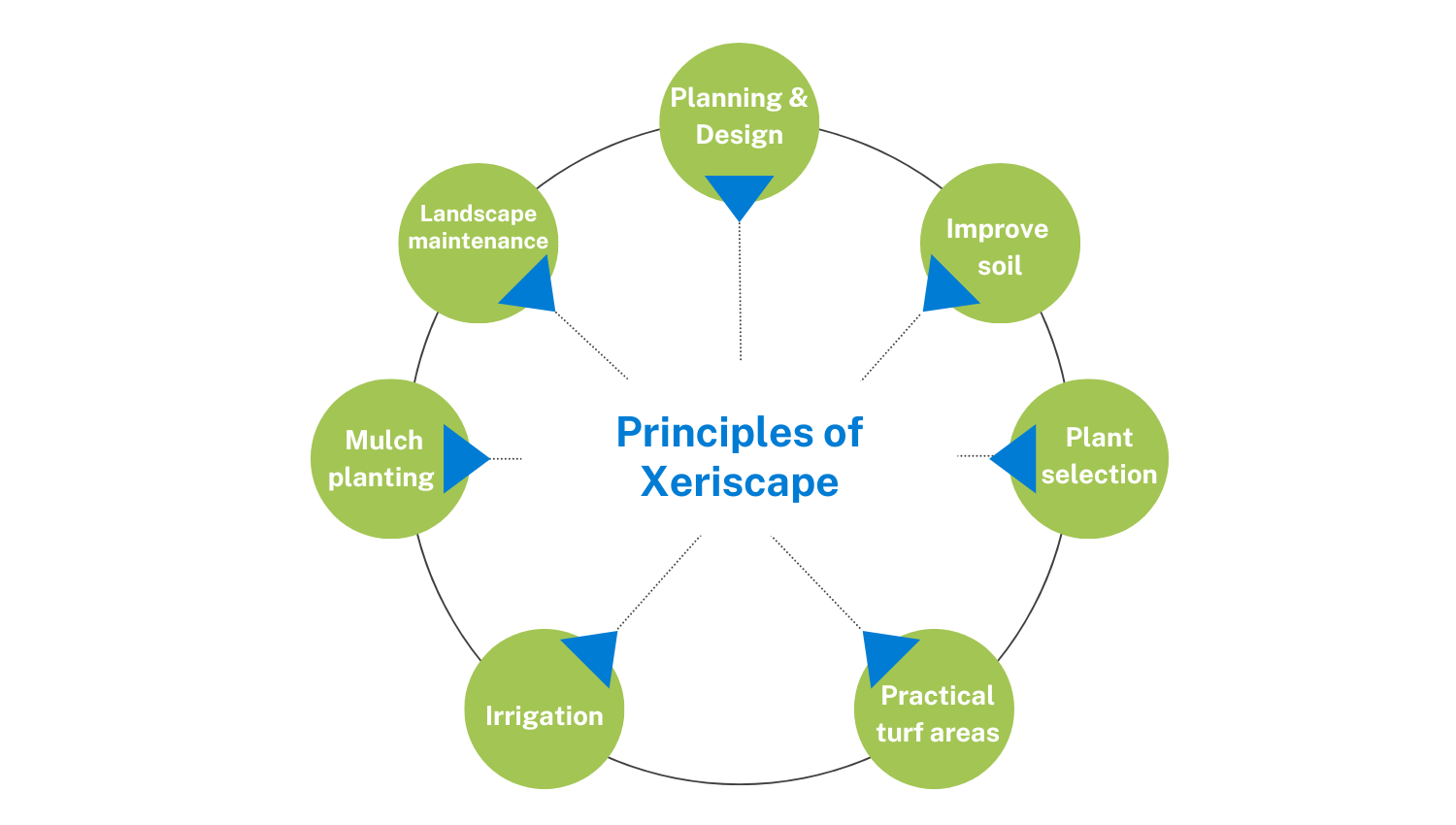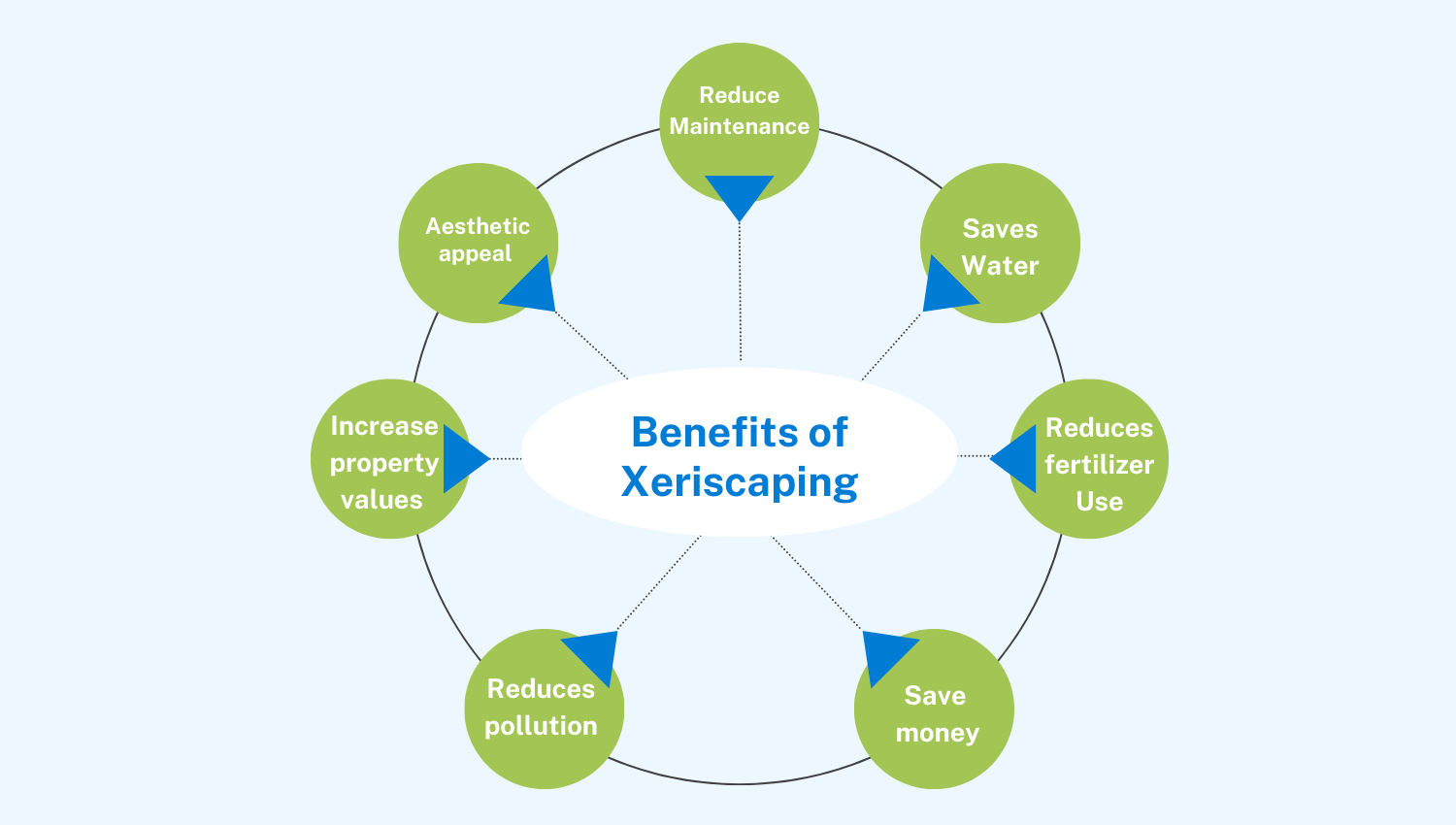What is Xeriscaping?
Xeriscaping is a process of designing and maintaining a landscape to promote sustainable gardening and reduce water usage in drought and arid areas. The Denver Water Department introduced xeriscaping in the early 1980s to minimize water use during droughts. The word xeriscape derives from the Greek “xerox,” meaning “dry.” Xeriscaping offers a practical, attractive solution that contributes to biodiversity and reduces water bills.
Xeriscaping focuses on creating sustainable and aesthetic outdoor spaces that effectively save you from watering your lawn, reducing water use by 50-70%. It helps maintain pleasing and eco-friendly landscaping.
What are the ideas for Xeriscaping in Tucson?
Xeriscaping is an innovative approach that combines water conservation with economic savvy. Here are 12 ideas for Xeriscaping in Tucson.
- Opt for Gravel Instead of Grass
- Grow Succulents
- Use Containers for Gardening
- Plant No-Mow Grasses
- Apply Mulch for Design
- Incorporate Ornamental Grasses and Groundcovers
- Create Low-Maintenance Rock Gardens
- Transition to a Rain Garden or Rainwater Harvesting System
- Install Drip Irrigation
- Add Shade-Providing Structures
- Plant Drought-Tolerant Perennials & Annuals
- Maximize Water Usage with Paver Designs
Table of Contents
Opt for Gravel Instead of Grass
Gravel reduces water consumption by eliminating irrigation and providing cost-effective solutions. Using gravel decomposed granite, desert gold gravel, or apache brown in place of grass is a sustainable solution, as it conserves water, prevents soil erosion, minimizes weed growth, blends with Tucson’s natural hues, and increases the longevity of your landscape design. Gravel saves 70% more water than grass, saving thousands of gallons annually. It is heat-retaining, matches a desert-arid climate, and encourages drought-friendly flora. Using decorative rocks, crushed granite, or pebbles enhances the overall aesthetic of your landscape.
Grow Succulents
Succulent creates a vibrant, water-efficient garden, adding color and beauty to your Tucson landscape. Succulents in xeriscaping help biodiversity by supporting the pollinator population. Agave, aloe, echeveria, and other related species of plants need minimum water and care, making them ideal succulents for Tucson landscaping. Succulents reduce water usage by 75%, reducing the need for chemical pesticides and fertilizers. Their resilience and low care make them perfect for xeriscaping while enhancing the visual appeal of your landscape. Scratch away the top layer of soil and place succulents on the ground to root in.
Use Containers for Gardening
Add diversity to your xeriscaped landscape by presenting a few potted plants. Containers contain soil and water and facilitate the growth of drought-resistant plants such as succulents and cactus. Choose pots made of terracotta, ceramic, or durable plastic with drainage holes to prevent waterlogging. Container plants are easily relocated to match seasonal requirements or change design preferences. Containers increase functionality and beauty by accommodating small spaces such as balconies and urban settings and help save 50% more water than traditional garden beds. These containers are ideal for xeriscaping to enhance the beauty of your Tucson landscape.
Plant No-Mow Grasses
Replace the organic grass with a no-mow drought-tolerant grass. No-mow grass is a practical and eco-friendly choice for xeriscaping, which helps conserve water. It requires minimal care and is perfect for Tucson’s arid climate, where water conservation is complex. Choose drought-tolerant no-mow grasses like Buffalo Grass, Blue Grama Grass, and Creeping Red Fescue, which flourish in Tucson’s arid conditions. It improves air quality and blends seamlessly with native plants to enhance the visual appeal of your landscape. No-mow grasses improve soil health and lower landscaping costs by reducing resource usage.
Apply Mulch for the Design
Mulch protects soil from moisture and improves soil condition, creating a smooth, classy, attractive landscape with healthier plants and an easy-to-maintenance landscape. It keeps the soil cool by reducing the evaporation of moisture. Mulch saves up to 50% water, making your garden water-efficient. It helps hold down the weeds, maintain soil temperature, and keep plants’ roots cooler in summer and warmer in winter. Mulch in xeriscaping helps your landscape to grow and stay healthy all year around.
Incorporate Ornamental Grasses and Groundcovers
Ornamental grasses and groundcovers fit best with a xeriscaped landscape as they are beautiful, functional, and offer water efficiency. They improve air quality by absorbing pollutants and improving soil health. Blue Fescue, Muhlenbergia, Buffalo Grass, Liriope, Creeping Jenny, and Thyme thrive in Tucson climate conditions and enhance the aesthetics of your landscape. Ornamental grasses are a focal point for your garden beds and walkways, adding height, movement, and texture to your landscape.
Create Low-Maintenance Rock Gardens
Don’t want to spend much time on maintenance? Then a rock garden is an excellent xeriscape idea. Create an eye-catching design with pebbles and stones. Various pebbles, shapes, colours, and sizes are available to provide the perfect solution for a sustainable and attractive garden. Rock gardens require up to 90% less water than traditional gardens. Rock gardens do not require mowing. Rock gardens help improve drainage and prevent water pooling in the landscape. The rough surface and height differences give a more exotic look, making them viable xeriscaping designs for dry regions.
Transition to a Rain Garden or Rainwater Harvesting System
Rainwater is the best solution to manage stormwater run-off and add beauty to your yard. It is an eco-friendly way to conserve water in Tucson’s arid climate. A rain garden is a shallow basin soil depression containing plants that accept, filter, and absorb rainwater, like salvia or penstemon. Rain gardens and rainwater harvesting systems provide eco-friendly solutions that increase the beauty of your property. Barrels or cisterns haul water from roofs and store it for irrigation. They support the natural cycle and reduce water waste. It cuts outdoor water usage by 50% or more, depending on the size of the system. It collects and utilizes rainwater, reducing households’ water costs by 30%. When installed, you improve the water usage efficiency and develop healthy green areas for outdoor usage.
Install Drip Irrigation
Installing drip irrigation increases water conservation efforts in xeriscaping. This helps to preserve water while also reducing evaporation and runoff. Installing drip irrigation improves water distribution in dry areas, assisting plants to thrive in arid climates. It is easy to manage, keeps weeds at bay, and is convenient with an automatic timer. It helps to ensure your plants receive optimal hydration and reduce water usage by up to 50%. This system targets individual plants, ensuring precise water delivery in your outdoor spaces.
Add Shade-Providing Structures
Stay breezy in summer by adding shaded retreats in your backyard with pergolas, arbors, or shade sails. Shaded-providing structures are crucial for xeriscaping in Tucson, where direct sunlight stresses plants and increases water evaporation. These structures have simple climbing vines like bougainvillea or native honeysuckle to add beauty and offer further shade, enhancing the aesthetic appeal of your garden. Shade structures are also functional and essential design features in the desert because they minimize the amount of watering, improve plant health, and provide comfortable spaces for leisure. Polyethylene or woven fabric shades help to block UV rays and reduce heat, requiring 30-50% less water than those exposed to sunlight.
Plant Drought-Tolerant Perennials & Annuals
Drought-tolerant plants are perfect for the Tucson environment, as they naturally adapted to survive on limited water conditions. They benefit xeriscaping as they help improve soil health by reducing erosion and preventing weed growth. Drought-tolerant plants like Red Yucca, Desert Marigold, and Penstemon have additional protection from a waxy layer that decreases evaporation or hairs on the leaf surface that reflect some light, insulating the plant. These plants minimize the use of chemical fertilizers and pesticides. Using drought-tolerant plants saves time and money on irrigation.
Minimize Water Usage with Paver Designs
Pavers offer practical and esthetical benefits to your landscape. They create a resilient surface requiring little care and can survive in less water. Pavers come in various shapes, sizes, and colors, making them suitable in any architectural design. Adding a paver to your xeriscape reduces water usage by up to 80% through minimizing erosion and runoff. Pavers improve the aesthetic value of the driveway and car parks. Select appropriate pavers based on climate and type of soil on your land so that they can serve for a long time.
What are the Best Plants for Xeriscaping in Tucson?
Trees for Xeriscaping in Tucson
There are 9 trees for xeriscaping in Tucson, which help to provide shade and thrive in dry conditions. They are ideal for creating sustainable, low-maintenance landscapes.
The trees include:
- Native – Desert Willow (Chilopsis linearis)
- Native – Palo Verde (Parkinsonia spp.)
- Native – Mesquite (Prosopis spp.)
- Native – Ironwood (Olneya tesota)
- Non-Native – Saguaro Cactus (Carnegiea gigantea)
- Non-Native – Tamarisk (Tamarix spp.)
- Native – Desert Hackberry (Celtis ehrenbergiana)
- Non-Native – Jojoba (Simmondsia chinensis)
- Native – Palo Brea (Parkinsonia praecox)
Shrubs for Xeriscaping in Tucson
The 8 significant shrubs for xeriscaping in Tucson require minimal water to provide structure, color, and texture to your landscape. The shrubs for xeriscaping include:
- Native – Texas Ranger (Leucophyllum frutescens)
- Native – Desert Marigold (Baileya multiradiata)
- Native – Brittlebush (Encelia farinosa)
- Native – Red Yucca (Hesperaloe parviflora)
- Native – Creosote Bush (Larrea tridentata)
- Native – Fairy Duster (Calliandra eriophylla)
- Native – Arizona Rosewood (Vauquelinia californica)
- Non-Native – Yellow Bells (Tecoma stans)
Annuals for Xeriscaping in Tucson
5 annuals for xeriscaping in Tucson help to handle intense sun and add beauty to your landscapes. The annuals for xeriscaping include:
- Native – Desert Lupine (Lupinus sparsiflorus)
- Native – California Poppy (Eschscholzia californica)
- Native – Desert Globemallow (Sphaeralcea ambigua)
- Non-Native – Mexican Sunflower (Tithonia rotundifolia)
- Non-Native – Zinnia (Zinnia spp.)
- Non-Native – Angelonia (Angelonia angustifolia)
- Non-Native – Sunflower (Helianthus spp.)
Perennials for Xeriscaping in Tucson
The 8 perennials for xeriscaping in Tucson thrive in desert climates and offer seasonal blooms. This list can help you to get started:
- Native – Autumn Sage (Salvia greggii)
- Native – Penstemon (Penstemon spp.)
- Native – Desert Four O’Clock (Mirabilis multiflora)
- Native – Blackfoot Daisy (Melampodium leucanthum)
- Native – Purple Sage (Salvia dorrii)
- Native – Desert Penstemon (Penstemon parryi)
- Non-Native – Blanket Flower (Gaillardia pulchella)
- Non-Native – Pineapple Guava (Feijoa sellowiana)
Succulents (Colorful Leaves) for Xeriscaping in Tucson
These 6 succulents with colorful leaves add a vibrant hue and unique texture to your landscaping design. These succulents include:
- Native – Agave (Agave spp.)
- Non-Native – Aloe Vera (Aloe barbadensis)
- Non-Native – Sedum (Sedum spp.)
- Non-Native – Kalanchoe (Kalanchoe spp.)
- Non-Native – Copper Canyon Daisy (Tagetes lemmonii)
- Non-Native – Agave ‘Blue Glow’ (Agave ‘Blue Glow’)
Succulents (Colorful Flowers) for Xeriscaping in Tucson
There are 5 succulents, and colorful flowers bring bustling blooms to Tucson’s xeriscaping garden. This list provides perfect ideas for you to get started.
- Non-Native – Crown of Thorns (Euphorbia milii)
- Non-Native – Ice Plant (Delosperma spp.)
- Non-Native – Christmas Cactus (Schlumbergera spp.)
- Non-Native – Hens and Chicks (Sempervivum spp.)
- Native – Desert Cactus (Opuntia spp.)
Ornamental Grasses for Xeriscaping in Tucson
There are 8 ornamental grasses for xeriscaping in Tucson. These grasses provide texture, movement, and color to your landscaping. The ornamental grasses include:
- Native – Mexican Feather Grass (Nassella tenuissima)
- Native – Blue Grama Grass (Bouteloua gracilis)
- Native – Little Bluestem (Schizachyrium scoparium)
- Native – Deer Grass (Muhlenbergia rigens)
- Non-Native – Pink Muhly Grass (Muhlenbergia capillaris)
- Native – Desert Needle Grass (Achnatherum speciosum)
- Native – Giant Sacaton (Sporobolus wrightii)
- Non-Native – Blue Fescue (Festuca glauca)
What are the Principles of Xeriscape Landscaping
According to a 2022 study by Dr. Vaishali S. Kohale at the integrated publisher New Delhi, there are 7 principles of xeriscape landscaping.
- Planning and Design
- Improve the soil
- Appropriate plant selection
- Practical turf areas
- Irrigation
- Mulch planting bed
- Landscape maintenance
These 7 principles, used in a xeriscaping landscaping design, help reduce water use by 60% or more. They are perfect for multiple regions and create a water-conserving landscape.
Planning and Design
Planning and designing are the initial steps to provide a proper direction, ensuring everything goes right into your landscape. Start with an appropriate site assessment, understanding factors like wind exposure, sunlight, soil type, and water availability. Creating a basic diagram that shows a landscape’s major elements helps you and the landscaper. It also ensures efficient water use and minimizes resource water.
Improve the Soil
According to the study by Dr. Vaishali S. Kohale, good soil promotes healthy plant growth while also preserving moisture; it is a necessary component of every healthy landscape. Front Range soils can be categorized as sand or clay layer soils. Clay soil absorbs and releases water slowly due to its density. On the other hand, soil rich in sand has a low water-holding capacity. Plants on sandy soils dry out unless they are watered properly. Healthy soil supports plant growth and helps retain water.
Appropriate Plant Selection
Focus on drought-tolerant plants for xeriscaping, as they are well-suited to the local climate and soil conditions. When selecting plants, it is crucial to evaluate their adaptability to where they will be planted. Native plants provide colorful blooms that thrive naturally with little water and maintenance.
Practical Turf Areas
Prudent placement of grass sections of controllable size and shape, together with the selection of appropriate drought-tolerant turf species, are necessary. It is best to maintain a swath of Kentucky bluegrass in your backyard for children and pets to play on while replacing the remainder with lower-water grass, native plants, or a rock garden. Ask your county extension agent or nurseryman for a list of drought-tolerant turfgrasses in your region.
Irrigation
Drip irrigation is best for xeriscaping. It directs water to plant roots, reducing water waste from evaporation or runoff. By zoning the irrigation system to serve plant groups with comparable water requirements, an irrigation system may be configured to irrigate correctly and efficiently. This can be done by irrigating grass areas separately (using a pop-up sprinkler system) and other planting bed/shrub areas (with low-volume drip watering).
Mulch Planting Bed
Mulch acts as an insulator for the roots, reduces compaction or crust formation, reduces water evaporation and inhibits the growth of weeds. Applying mulch helps reduce the frequency of watering while improving plant health. It is better to use Organic mulches, including bark chips, pole peelings, or wood grindings at 4 inches deep. It is suitable for constructing new beds, since it will degrade within a few years. Plants grow and spread, and in the process, they hide the area where mulching has taken place.
Pebbles and gravel are the inorganic mulches placed at least 2 inches deep. They need to be changed only in rare cases and work well in increased wind speeds.
Landscape maintenance
Regular maintenance is required for a new xeriscaping garden. Turf requires aeration in the spring and autumn and frequent fertiliser application every six to eight weeks. Mow the turf to 3 inches high using the bagless lawn mower and leave the clipping to fall on the ground. Trees, shrubs, and perennials require occasional trimming to remove dead stems, help to increase flowering beauty or regulate height and spread. Punning, removing dead plants, and checking irrigation systems help you to have a beautiful and functional landscape.
What are the Benefits of Xeriscape Landscaping?
According to a 2022 study by Dr. Vaishali S. Kohale at the integrated publisher, New Delhi, xeriscaping landscaping has 7 significant benefits.
- Reduce Maintenance
- Saves Water
- It reduces the use of fertiliser
- It helps save you money
- Reduces pollution
- Property values increase
- Appealing aesthetically
Xeriscaping offers these 7 benefits for water scarcity and arid climatic regions. These benefits help create a beautiful, sustainable, and functional outdoor space.
Reduce Maintenance
Apart from the occasional trimming and weeding, maintenance is minimal in xeriscape landscaping. When comparing the expenses of annual upkeep and park creation, xeriscaping saves around 55% and 57%, respectively. Aside from the occasional weeding and mulching, xeriscaping takes far less time and work to maintain.
Saves Water
Xeriscapes reduce water usage by 60% or more than traditional grass landscaping. Native plants (especially adapted to your location, temperature, and soil type) use far less water than turfgrass, and many do not require any more. Furthermore, hydro zoning (grouping plants according to their water requirements) avoids overwatering and underwatering. Consuming less water on lawns helps conserve more water for drinking.
It reduces the use of fertilizer.
No artificial fertilizers or supplements are required to aid growth in xeriscape landscaping. Using natural plants in your region eliminates the need for chemical additives, which in turn helps enhance your landscape’s beauty.
It helps save you money.
Xeriscape reduces the bill of water by up to 80%. When you choose native plants, you don’t have to waste your money on gas to fill your lawn mower. Xeriscaping helps reduce your yearly lawn maintenance cost by a whopping 87%. Xeriscaping eliminates spending time and money on maintenance or paying someone to complete the task. You can save money that can be used for other purposes.
Reduces pollution
Adopting xeriscape landscaping helps create a more sustainable and environmentally friendly landscape. Minimal lawn areas reduce or eliminate fossil fuel usage from gas mowers, indirectly benefiting the environment by eliminating the demand for gasoline-powered mowers. You not only help the environment but also reduce pollutants.
Property value increases
Xeriscaping increases the value of your property by 14%. It offers aesthetic appeal through creative design, textures, and colorful drought plants. Xeriscaping suits various aesthetics, conserves water, and enhances the property’s overall look. Try xeriscaping to improve your curb appeal and attract the attention of knowledgeable house seekers.
Appealing aesthetically
Xeriscaping appeals to many people as it blends natural beauty with sustainable design. A well-planned and properly maintained landscape is what you need, and xeriscaping caters to your needs. Carefully used textures, colors, and materials offer infinite styles, and you can achieve a stunning, eco-friendly, and visually captivating landscape.
How much does xeriscape cost in Tucson?
Most homeowners report spending between $15,120 and $18,400 on xeriscaping initiatives. A standard-size yard costs roughly $17,000 nationally, including labour and supplies.
The average American yard measures 10,080 square feet, or one-quarter of an acre, yet few homeowners choose to xeriscape their whole property. Because this service can be expensive, the typical xeriscaped area is 1,000 to 2,000 square feet, costing between $15,120 and $18,400.
Labor charges in Tucson vary between $50 and $100 per hour. For a minimum yard size, labor costs account for 30-40% of the total cost.
The national average cost of xeriscaping materials without installation is between $9 and $11 per square foot. However, if you need to acquire high-quality, drought-tolerant plants, expect to pay $25 or more per square foot.
About The Author
Isaiah Espinoza
Isaiah Espinoza is the proud company owner, founder and driving force behind Legacy Landscaping and Design. Isaiah established Legacy Landscaping & Design in 2014, bringing his vision of creating stunning outdoor spaces to life. Isaiah, the founder of Legacy Landscaping & Design, has a deep-rooted passion for construction and design, stemming from four generations of family expertise in the industry. With a KB-1 General Building License and a CR-21 Hardscaping and Irrigation License, Isaiah has spent the past decade transforming outdoor spaces with exceptional craftsmanship and innovative design.

